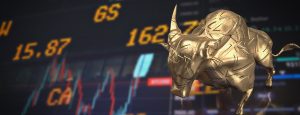The energy market is the backbone of the global economy, driving industries, powering homes, and fueling vehicles. For investors and traders, energy commodities like oil, gas, and renewable fuels represent some of the most dynamic opportunities within the commodities market. But how does trading in this market work? What factors drive volatility, and how do you make informed decisions?
This blog will help you understand the intricacies of energy trading by exploring key commodities such as oil, natural gas, and renewable fuels. Investors, traders, and financial enthusiasts alike will gain insight into market mechanics, key drivers, and tips for navigating energy trading on platforms like PMEX (Pakistan Mercantile Exchange) and PSX (Pakistan Stock Exchange).
The Basics of the Energy Commodity Market
Energy commodities fall under the broader umbrella of the commodities market. This sector includes everything from crude oil and natural gas to biofuels and renewable energy credits. Investors buy and sell these resources through exchanges like PMEX or international markets. Here’s a breakdown of the most traded energy commodities:
1. Crude Oil
Crude oil dominates the global commodity market. Known as “black gold,” it is indispensable for transportation, manufacturing, and everyday energy needs. Two primary benchmarks dominate oil trading:
- West Texas Intermediate (WTI): Commonly traded in the US.
- Brent Crude: The international benchmark for trading oil globally.
Price fluctuations in crude oil largely depend on supply-demand dynamics, geopolitical events, OPEC decisions, and natural disasters impacting production. For example, disruptions in Middle Eastern oil fields or hurricane activity in the Gulf of Mexico can send shockwaves through the market.
2. Natural Gas
Natural gas, often overshadowed by oil, is essential for heating, electricity generation, and industrial processes. Prices are more regionally driven compared to crude oil, with seasonal demand (e.g., winter heating needs) playing a critical role. On platforms such as PMEX, natural gas futures are gaining traction as traders realize their importance in the shifting energy landscape.
3. Renewable Fuels
Renewables, such as bioethanol, biodiesel, and hydrogen fuels, are rising stars in the energy commodities market. Governments worldwide are pushing for cleaner energy options, driving demand for greener alternatives. Investors looking to incorporate ESG (Environmental, Social, and Governance) principles in their portfolios might find this category particularly attractive.
Understanding Market Influences
Energy trading is influenced by a complex interplay of factors. Staying ahead requires a deep understanding of these key market drivers:
1. Geopolitical Tensions
Political instability, sanctions, or conflicts in oil-producing countries can significantly impact prices. For example, sanctions on Russian energy exports influenced global pricing and availability during 2022.
2. Supply and Demand
Sudden supply disruptions (oil spills, refinery outages) or surges in demand (heatwaves, cold winters) can lead to sharp price swings.
3. Macroeconomic Indicators
The global economy and currency strength directly impact commodity trades. For instance, when the U.S. dollar strengthens, commodities priced in dollars, such as oil, often become more expensive in other currencies, affecting demand.
4. Transition to Renewables
The shift from fossil fuels to renewables like wind, solar, and biofuels is reshaping traditional energy markets. Policies such as carbon taxes and renewable energy incentives are increasing renewable commodity demand while impacting oil and gas futures.
How to Trade Energy Commodities
Energy trading offers high rewards, but it comes with significant risks. Here’s how you can get started as a trader or investor:
1. Understand Futures Markets
Oil, gas, and renewable fuels are often traded in futures contracts. These contracts allow you to speculate on price movements without taking physical delivery of the asset. Traders on exchanges like PMEX frequently use energy futures to hedge risks or generate profits.
2. Research Price Trends and Drivers
Successful energy traders pay close attention to historical price charts, geopolitical news, and weather forecasts. Knowing market catalysts like OPEC production cuts can provide a competitive edge.
3. Trade on Reliable Platforms
Exchanges such as PMEX and PSX offer robust platforms for trading commodities. PMEX, for instance, specializes in futures, providing standard contracts and transparency for energy traders. Be sure to familiarize yourself with the platform’s functionalities before entering trades.
4. Leverage Technology and AI Analytics
Modern traders often deploy AI-driven analytics to predict market trends by analyzing large datasets. Tools like sentiment analysis and algorithmic trading systems provide significant advantages.
5. Diversify Your Portfolio
Don’t rely solely on one commodity type. Diversification across oil, natural gas, and renewable fuels can help minimize risk from market volatility. Additionally, aligning your portfolio with both fossil fuels and renewables bridges traditional and future energy demands.
Opportunities in Renewable Energy Trading
The renewable energy sector is particularly exciting for forward-looking investors. Governments are allocating substantial budgets to clean energy initiatives, accelerating demand for biofuels and renewable energy credits. Tracking government incentives or renewable energy auctions on systems like PSX can present lucrative opportunities.
For example, the carbon credit market is growing exponentially, offering investors a chance to profit while supporting eco-friendly initiatives. Platforms specializing in renewables, like Floret Commodities, are great resources for traders transitioning to green energy-focused investments.
Risks to Consider
Like any market, the energy commodities market carries risks. Price volatility can lead to huge gains or losses. Additionally, unpredictable factors like natural disasters or geopolitical crises can take traders by surprise. Make sure to employ risk management strategies, such as setting stop-loss orders or maintaining adequate cash reserves.
Why Energy Commodities Matter for Investors and Traders
The energy market is constantly evolving. From traditional heavyweights like crude oil to emerging renewable assets, every aspect reflects shifts in global energy demand. For astute investors and traders, energy commodities present a wealth of opportunities to build resilient, diversified portfolios. Platforms like PMEX offer accessibility to this lucrative sector, empowering financial enthusiasts to get involved in the commodities market.
Looking ahead, energy market participants willing to explore renewable fuels alongside traditional energy trades can gain significant advantages in this increasingly complex landscape.
Final Thoughts
Understanding energy markets is no longer optional for modern investors and traders. Whether trading crude oil or exploring renewable fuel options, the right strategies matched with market insight can yield substantial returns. Want to start trading energy commodities confidently? Floret Commodities and platforms like PMEX are excellent resources to refine your approach. Remember, knowledge is power in the commodities market.
Explore the emerging opportunities in the energy sector today, and empower your investments for a greener, more profitable future.



